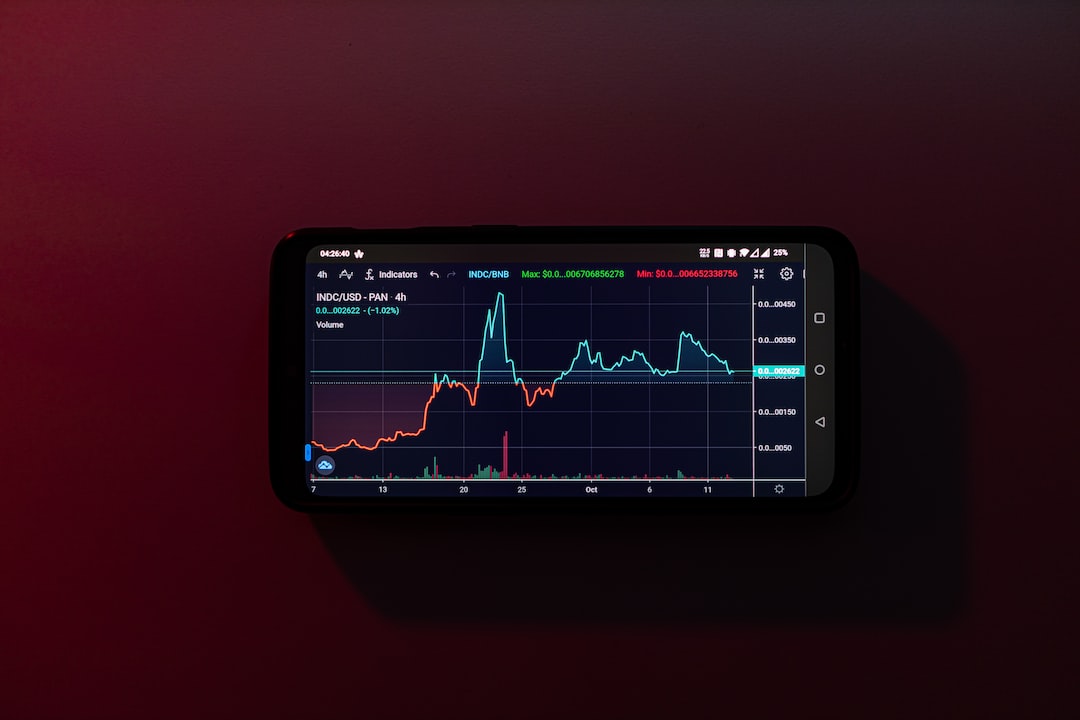Table of Contents
Introduction
Welcome to the fascinating world of plumbing inspection in [city]! In this article, we will delve into the intricate process that [city] implements to ensure unparalleled safety and efficiency in its plumbing systems. Plumbing inspections play a vital role in maintaining the overall well-being of a city, as they help identify potential issues, prevent costly repairs, and safeguard the health of its residents.
Throughout the article, we will explore the various steps taken by the dedicated professionals of [city] to guarantee that every plumbing installation meets the highest standards of quality and functionality. From initial planning to the final inspection, we will uncover the behind-the-scenes activities that occur to keep [city]’s plumbing infrastructure running smoothly.
Get ready to discover the hidden intricacies of the plumbing inspection process in [city], and gain a deeper appreciation for the tireless efforts that go into ensuring the safety and efficiency of its plumbing systems. Let’s dive in and unravel the mysteries of [city]’s commitment to excellence in plumbing!
Plumbing pipe replacement
Plumbing pipe replacement is a necessary process when the existing pipes in a building are damaged, deteriorated, or no longer functioning properly. Over time, pipes can develop leaks, corrode, or become clogged, leading to numerous plumbing issues. Pipe replacement involves removing the old pipes and installing new ones to ensure the efficient and safe flow of water and waste.
There are several reasons why plumbing pipe replacement may be necessary. One common reason is aging pipes, especially in older buildings. Over time, pipes can rust, decay, or develop cracks, leading to leaks and water damage. Another reason for pipe replacement is blockages caused by buildup of debris, mineral deposits, or tree roots, which can restrict the flow of water or cause backups. Additionally, pipes made from certain materials, such as lead or polybutylene, may need to be replaced for health and safety reasons.
The process of plumbing pipe replacement typically involves a thorough inspection of the existing pipes to identify the extent of the damage or deterioration. Based on the inspection, a plumber will determine the appropriate replacement materials and techniques. This may involve removing sections of walls or flooring to access the pipes, disconnecting and removing the old pipes, and installing new pipes that meet current building codes and standards.
Plumbing fixture installation
Plumbing fixture installation is an important aspect of any plumbing system. Whether you are building a new home or renovating an existing one, properly installing plumbing fixtures is crucial for the overall functionality and efficiency of your plumbing system.
Plumbing fixtures refer to the various devices and appliances that are connected to your plumbing system, such as sinks, toilets, showers, bathtubs, faucets, and water heaters. The installation process involves several steps to ensure that the fixtures are securely connected and properly functioning.
Firstly, it is important to select fixtures that are of high quality and suitable for your specific needs. Once you have chosen the fixtures, the installation process begins with preparing the area where the fixture will be placed. This may involve cutting holes in walls or countertops and making connections to the existing plumbing system.
Next, the fixture is secured in place using various techniques and tools, such as brackets, screws, or adhesives. Proper sealing is also essential to prevent any leaks or water damage.
After the fixture is installed, it is important to test its functionality by checking for proper water flow, drainage, and any potential leaks. If any issues are identified, adjustments or repairs may be necessary to ensure the fixture is working correctly.
Overall, plumbing fixture installation requires careful planning, knowledge of plumbing systems, and attention to detail to ensure that your fixtures are installed correctly and function properly.
Plumbing valve repair
Plumbing valve repair is an important aspect of maintaining a functional plumbing system. Valves are essential components that control the flow of water or gas through the pipes in a building. Over time, valves can develop issues such as leaks, clogs, or faulty operation, which can disrupt the proper functioning of the plumbing system.
When a plumbing valve needs repair, it is crucial to address the issue promptly to prevent further damage and ensure the smooth operation of the plumbing system. The first step in the valve repair process is identifying the type of valve that needs attention. There are various types of valves used in plumbing systems, including ball valves, gate valves, and globe valves.
Once the type of valve is identified, the next step is to assess the specific problem. This could involve inspecting for leaks, testing the valve’s functionality, or examining any visible signs of damage. Based on the assessment, the appropriate repair method can be determined.
Valve repair can involve tasks such as tightening or replacing fittings, applying sealants or lubricants, replacing damaged components, or even completely replacing the valve if necessary. It is important to follow proper repair techniques and use the correct tools to ensure the repair is effective and long-lasting.
In conclusion, plumbing valve repair is a crucial part of maintaining a functional plumbing system. By addressing valve issues promptly and using appropriate repair techniques, the plumbing system can continue to operate smoothly and efficiently.
Plumbing emergency service
Plumbing emergency service plays a crucial role in addressing urgent plumbing issues that require immediate attention. When faced with a plumbing emergency, it is important to act promptly to minimize damage and inconvenience. Emergencies can include burst pipes, sewage backups, non-functioning water heaters, or any other plumbing issue that poses a significant risk to property or safety.
Plumbing professionals who offer emergency services are available 24/7 to respond to these situations. They have the expertise and tools necessary to quickly diagnose and resolve the issue. Upon receiving a call, an emergency plumber will prioritize the situation and dispatch a qualified technician to the location within the shortest possible time.
During a plumbing emergency service, the plumber will assess the situation, perform necessary repairs or replacements, and ensure that the plumbing system is functioning properly again. They may need to shut off water or gas supply to prevent further damage. Once the immediate issue is resolved, the plumber may also provide recommendations for further preventive measures to avoid future emergencies.
Plumbing emergency service is essential for homeowners and businesses alike, as it provides peace of mind knowing that skilled professionals are available to handle unexpected plumbing issues efficiently and effectively.
Plumbing drain cleaning
Plumbing drain cleaning is an essential aspect of maintaining a healthy and functional plumbing system. Over time, drains can become clogged with debris, grease, hair, and other substances, causing blockages and backups.
There are several methods used for plumbing drain cleaning. One common method is using a plumber’s snake or drain auger. This tool is inserted into the drain and used to break up and remove the clog. Another method is hydro jetting, which involves using high-pressure water to clear the drains and remove any buildup.
Regular drain cleaning can help prevent clogs and keep your plumbing system running smoothly. It is recommended to schedule professional plumbing drain cleaning at least once a year, or more frequently if you have a history of frequent clogs or slow drains.
In addition to professional drain cleaning, there are also preventive measures you can take to keep your drains clean. These include using drain strainers to catch debris, avoiding pouring grease or oil down the drain, and using a drain cleaner on a regular basis.
Plumbing water heater service
Plumbing water heater service is an essential aspect of maintaining the functionality and efficiency of your water heater. Regular service and maintenance can help extend the lifespan of your water heater and prevent costly repairs or replacements.
During a plumbing water heater service, a licensed plumber will typically perform a thorough inspection and maintenance routine to ensure that your water heater is working properly. This may include checking for signs of leaks, corrosion, or sediment buildup, as well as testing the pressure and temperature relief valves.
The plumber will also examine the heating elements or burner, as well as the venting system, to ensure they are functioning correctly. They may flush out any sediment accumulation to improve the water heater’s performance.
In addition to servicing the water heater itself, a plumber may also inspect the plumbing connections and pipes leading to and from the water heater. This is important to identify any potential leaks or issues that could impact the overall functioning of the system.
Overall, plumbing water heater service is crucial for maintaining a reliable and efficient hot water supply in your home. It is recommended to schedule regular service appointments with a professional plumber to ensure the optimal performance of your water heater.
Plumbing sewer line repair
Plumbing sewer line repair is a critical and necessary process for maintaining the functionality of a plumbing system. Sewer lines are responsible for carrying wastewater from your home to the main sewer system. Over time, these pipes can become damaged, clogged, or cracked, leading to issues such as leaks, blockages, and backups. When facing sewer line problems, it is important to address them promptly to prevent further damage and potential health hazards. The process for plumbing sewer line repair typically involves a few key steps.
First, a thorough inspection of the sewer line is conducted using specialized cameras and equipment. This allows plumbers to identify the specific issues and determine the best course of action for repair. Depending on the extent of the damage, repair options may include trenchless methods such as pipe lining or pipe bursting, or traditional excavation methods.
Once the repair method is decided, the damaged section of the sewer line is repaired or replaced. This may involve removing the old pipe and installing a new one or using trenchless methods to rehabilitate the existing pipe. Lastly, the repaired sewer line is tested to ensure it is functioning properly, and any necessary adjustments or clean-up are performed.
Plumbing leak detection
Plumbing leak detection is a crucial part of maintaining a safe and efficient plumbing system in any building or property. Leaks can cause serious damage if left undetected, leading to structural issues, mold growth, and water wastage. Detecting plumbing leaks early on can save homeowners and property owners from costly repairs and potential health hazards.
There are several methods used for plumbing leak detection, depending on the type of plumbing system and the location of the potential leak. One common method is visual inspection, where a professional plumber visually examines all visible plumbing fixtures, pipes, and connections for any signs of leakage. This may include looking for water stains, wet spots, or drips.
In addition to visual inspection, plumbers may also use specialized equipment such as leak detection devices or thermal imaging cameras to identify hidden leaks. These tools can help identify leaks behind walls, under flooring, or within the plumbing system itself.
Once a leak is identified, prompt action should be taken to repair or replace the affected plumbing component. This may involve fixing a faulty connection, replacing a damaged pipe, or installing new plumbing fixtures.
Conclusion
If you are in need of plumbing assistance, don’t wait any longer. Call our expert team of plumbers at 573-555-2121 today. We are available 24/7 to handle all your plumbing emergencies and provide reliable and efficient solutions.
With our years of experience and expertise, we can address a wide range of plumbing issues, from pipe replacements and fixture installations to valve repairs and sewer line repairs. Our licensed plumbers will conduct thorough inspections, use the latest techniques and tools, and ensure that your plumbing system is safe, functional, and efficient.
Don’t let plumbing problems disrupt your daily routine or cause further damage to your property. Trust our professional plumbers to deliver prompt and effective solutions that meet your needs. Call 573-555-2121 now and let us take care of all your plumbing needs. Your satisfaction is our top priority!
Frequently Asked Questions
What is a plumbing inspection?
A plumbing inspection is a thorough examination of a plumbing system to assess its condition and identify any potential issues or problems.
Why is a plumbing inspection necessary?
A plumbing inspection is necessary to ensure the proper functioning of the plumbing system, detect any leaks or damages, and prevent potential plumbing emergencies.
What does a plumbing inspection include?
A plumbing inspection typically includes checking fixtures, pipes, drains, water pressure, water heater, sewage system, and identifying any leaks, clogs, or potential problems.
How often should a plumbing inspection be done?
It is recommended to have a plumbing inspection done at least once a year to ensure the ongoing functionality and safety of the plumbing system.
Who should perform a plumbing inspection?
A licensed and experienced plumber should perform a plumbing inspection to ensure the accuracy of the assessment and the proper identification of any plumbing issues.












